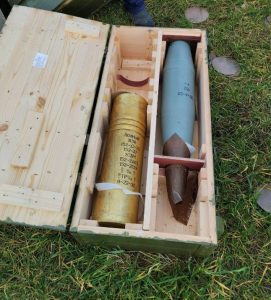Analyst Note:
Whereas many cartridges are of the 'fixed' type—with the propellant charge contained entirely within the cartridge, and the cartridge case crimped around the projectile—the OF-540 artillery gun projectile is a type of 'semi-fixed' ammunition. A round of semi-fixed ammunition is separated into two groups of components: the projectile and fuze; and the cartridge case, primer, and one or more propellant charges. These two component groups are typically combined at the time of loading the gun, or shortly beforehand. The majority of ammunition fired by artillery systems is either semi-fixed or 'separate loading' (see Glossary). (ARES)








